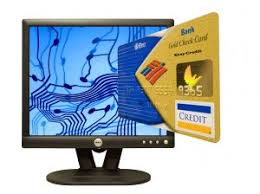Forex charts are easy to interpret, especially for someone that has invested in or day traded stocks before. When looking at a real time chart of a stock, the trader has to select the chart period (1 day, 5 minutes, 15 minutes, etc.) and the ticker symbol of the desired stock. The concept is the same for a currency chart. The trader would select the specific currency pair (U.S. Dollar versus the Japanese Yen, the Euro versus the Dollar, etc.) and the desired time period for each bar of the forex chart. The example below shows a snapshot of a real time 15-minute candlestick chart of the Euro versus the U.S. Dollar (EUR/USD) currency pair taken from our forex day trading system (this system can be used to obtain.
NOTE: Information on FX charting will be provided during our free, live forex training.

On the day above (December 2, 2002), the forex chart shows a strong move in the Euro versus the dollar, from a low of 0.9869 (about 8:30AM EST) to 0.9975. This is a difference of 0.0106 or 106 pips (in forex trading, a "pip" is the smallest tick in the price of a currency, which is similar to a "tick" in stocks). In dollars, this move is equivalent to an amount of US$1,060 per lot. In our forex trading system, currencies are traded in lots of 100,000 (100,000 x 0.0106 = $1,060). With a margin requirement of only $1,000 per lot, this corresponds to a return of over 100%. In other words, while a move from 0.9869 to 0.9975 is only about 1%, with 100 to 1 margin this return becomes over 100% (Please Note: Increasing leverage increases risk; in this example, a move of 1% in the other direction could have resulted in a loss of the same magnitude). In our forex education section we also explain how to read a forex quote and other currency trading basics.
More Currency Charts
If you were to look at the forex chart below without knowing that it was a currency chart, you might have thought that it was a chart of a 124 dollar stock. The snapshot of the real time forex chart below shows the relationship between the U.S. Dollar and the Japanese Yen for a three month period. Each candle represents one day of price activity, with the last candle on the forex chart showing the current value of the dollar versus the yen (124.50 yen). Consequently, an investor that day trades stocks can easily adapt to forex charts. If he feels that the dollar will go up, he simply buys. Then, for the sake of simplicity, let's say that the candles on his chart start moving up (e.g., 125.00, 125.25, 126.10, etc.). This means his balance is positive.

Notice that four lines of different colors are superimposed on the forex chart shown above. These lines are what are known in technical analysis as "moving averages," arithmetic averages of the price of the currency pair over a certain number of periods. The moving averages shown on the currency chart above are 10-day, 20-day, 50-day, and 200-day moving averages. Day trading currencies mainly involves the application and interpretation of technical analysis on real time forex charts, just like day trading stocks involves applying technical analysis to real time stock charts.
Free Forex Charts
If you are a trader, by now you have probably realized that currency charts are really no different than stock charts. Once you understand how to read forex quotes, you can begin to trade currencies by applying technical analysis to different currency charts. One of the advantages of trading currencies over stocks is that you only have a few major currencies to trade rather than tens of thousands of stocks. Thus, it is a lot simpler.
To get access to free forex real time charts, you can sign up for free access to our real life forex trading simulator. This simulator will not only let you play with different currency charts in real time, but it will also allow you to practice executing buy and sell orders at actual prices. The award-winning forex trading system is the best way for you to learn forex day trading. Pulling up currency charts is very easy. Try it for free.










0 comments:
Post a Comment